CO Regex Cloud App Documentation
Purpose of the CO Regex Cloud App
There are situations where the values of certain fields need to be validated against specific Regular Expressions. This is where this Cloud App comes into play. With CO Regex Cloud App, It takes the value from a field in a Custom Object and applies a Regex expression, and then the result(s) goes to another selected Custom Object field(s). This Cloud App can validate a Regular expression, can split a field value into multiple fields based on Regular expression and also this can transform the value of a field based on Regular transform expression.
- Validation: The app can validate If a particular field has to meet certain format, in that case you have to select the “Validate” option in the “Regular Expression Type” and select one field, which will be updated the True or False values when a record is processed. For example the following regular expression validates that a text has the format of an email address: /^([^@\s]+)@((?:[-a-z0-9]+\.)+[a-z]{2,})$/i
- Split: The app can take the value from a field and split it into multiple fields using a Regular Expression. For example, for a field value like “10 VPs, 20 Directors, 40 SMEs.” If we need to split based on the digits with the following expression \D+: The result will be:
- 10 VPs
- 20 Directors
- 40 SMEs
- Transform: The app allows you to transform the value of a field and executes a Regex transformation. For example with the following regular expression: .*(\snot).* if the field value is “My network does not work.” The result will be ” not”
Regex examples – https://medium.com/factory-mind/regex-tutorial-a-simple-cheatsheet-by-examples-649dc1c3f285
This document will show how this Cloud action can be used inside CO Based Program Canvas.
Set-up in Oracle Eloqua
Please follow these instructions to set-up this cloud action in your Oracle Eloqua instance.
Please follow these instructions to set up this cloud app in your Oracle Eloqua instance.
- Log in to Oracle Eloqua.
- Click on Get App below to install.
NOTE: If prompted to log again, please do so.
- In the next screen, click “Sign In” and then “Accept”
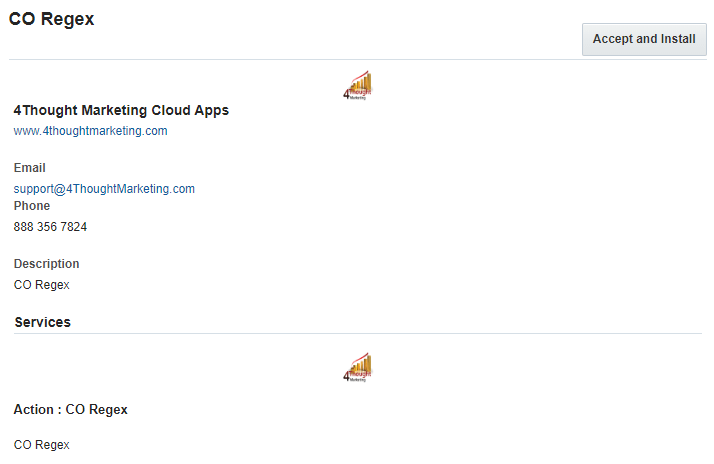
- In the next screen, click “Sign In” and then “Accept”
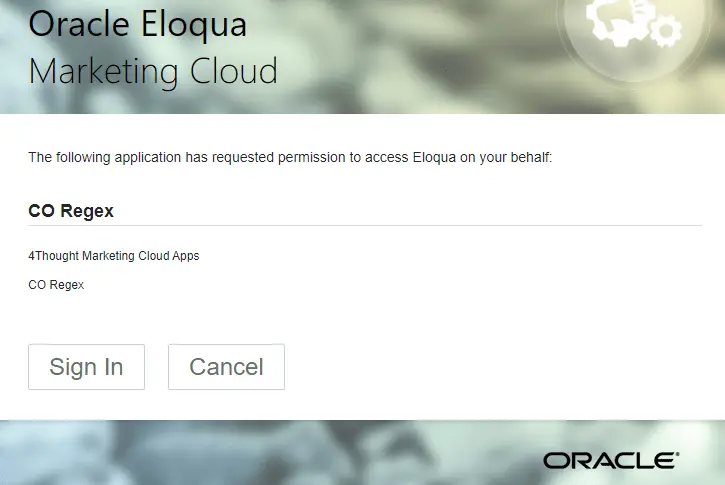
- You’re all set. The cloud action is ready to be used.

How to use
The following instructions show a basic/simple usage. You can incorporate this Cloud Action to any existing CO based Program Canvas.
- Create/Open a CO Program Canvas
- On “Program Steps” on the top left side then click arrowhead and then locate the “CO Regex” Cloud Action under the Actions options (colored in purple).
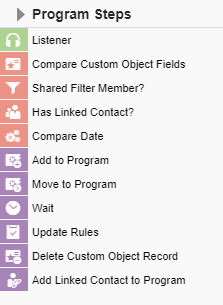
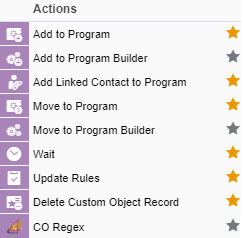
- Drag and drop the cloud action to the canvas area. Connect the corresponding elements to the dropped cloud action
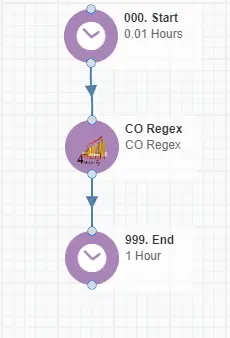
- Double click the CO Regex step; you will see the configuration options for this element.
- Rename the step if needed

- Click the pencil icon to open the settings for this step.
You will need a user to log in and configure this Cloud Action. If you don’t have one, you can create one. If you do, use your user to Log In in the page shown in the following screenshot:
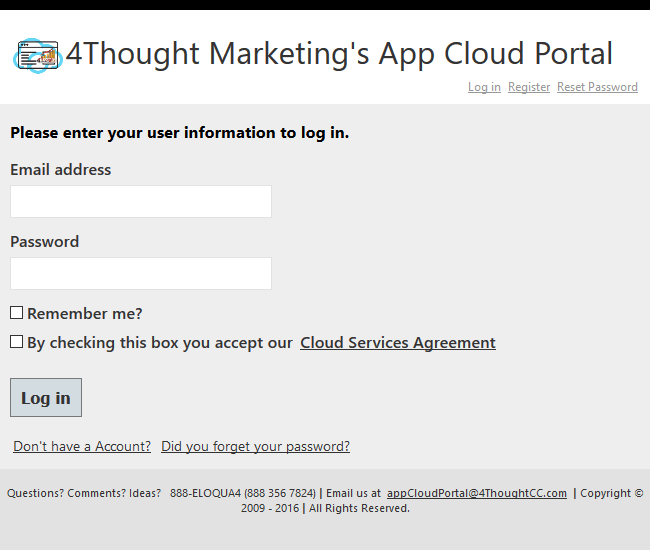
- For this cloud action, you can perform 3 different actions (anyone at a time) on the CO set fields.
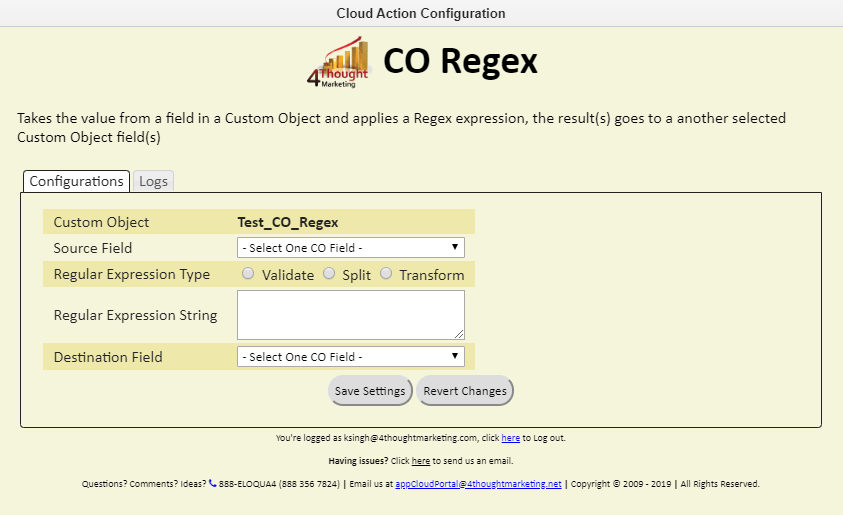
Validate
- Select CO set field as a source field, on which you want to perform action.
- Select Validate if you want that source field value meets certain format. in that case you have to select the “Validate” option in the “Regular Expression Type” and select one field, which will be updated the True or False values when a record is processed. For example the following regular expression validates that a text has the format of an email address: /^([^@\s]+)@((?:[-a-z0-9]+\.)+[a-z]{2,})$/i
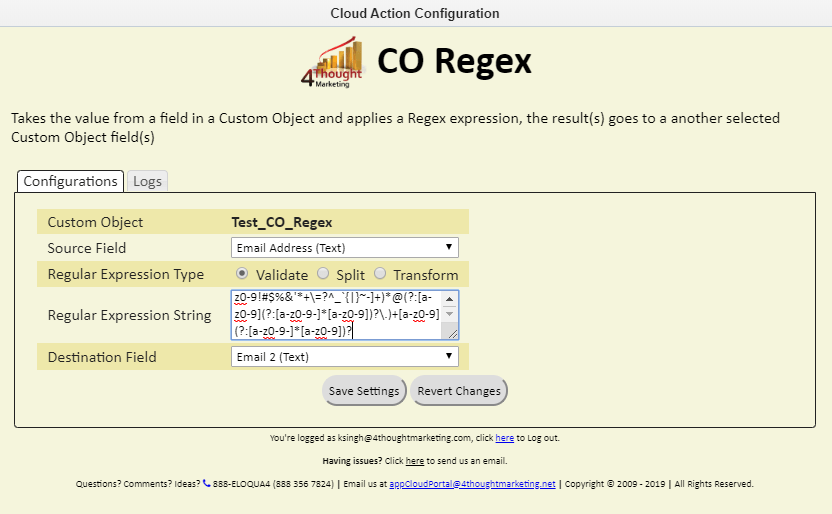
- Select Source field Email address if you want to Validate Email address.
- Check option Validate from the Regular Expression Type.
- Write the Email validation Regular expression in the Regular Expression String.
- Select destination field to store results and click on the Save Settings.
Split
Select Split if you want to split a specific field value in to different fields. This option can take the value from a field and split it into multiple fields using a Regular Expression. For example, for a field value like “10 VPs, 20 Directors, 40 SMEs.” If we need to split based on the digits with the following expression \D+: The result will be:
- 10 VPs
- 20 Directors
- 40 SMEs
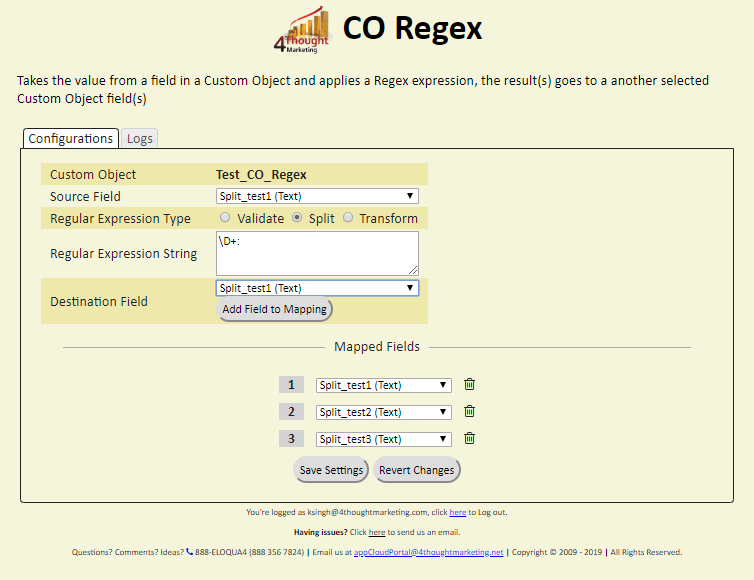
- Select Source field for which you want to Split the values.
- Check option Split from the Regular Expression Type.
- Write the Split Regular expression in the Regular Expression String.
- Select destination field to store results.
- Click on the “Add Field to Mapping”. If there are more than 1 fields which will store the Split values then select destination field and click “Add Field to Mapping”. Finally click on the Save Settings to save the changes.
Transform
Checked the option Transform if you want to transform the value of a field and execute a Regex transformation.
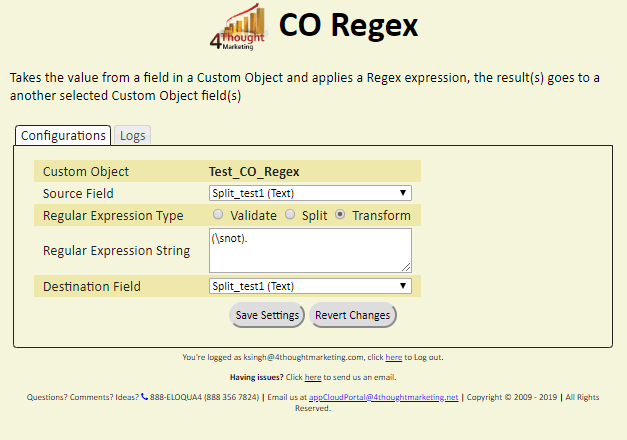
- Select Source field which needs to be transformed.
- Check option Transform from the Regular Expression Type.
- Write the Transform Regular expression in the Regular Expression String.
- When using the Transform expression type the Expression string must contain two lines:
The first line defines the matching elements.
The second line defines the output format.
This is an example of a phone formatter: (\d{3})(\d{3})(\d{4})
($1) $2-$3
There is no need to use a delimiter.
- Select destination field to store results and click on the Save Settings.
- Make sure you click on ‘Save Settings’ to save your configuration. If you make any changes you can click on ‘Revert Changes’ to go back to the last saved configuration.
- Logs Tab: This section shows the execution logs for the cloud app

- Show: Here you can select what type of log you want to see. You have an option to select “All logs”, “Successful logs only”, “Failed logs only”
- Within the following timeframe: This field allows you to select the timeframe to view the execution logs.
Note: You can view up to 2 months of logs
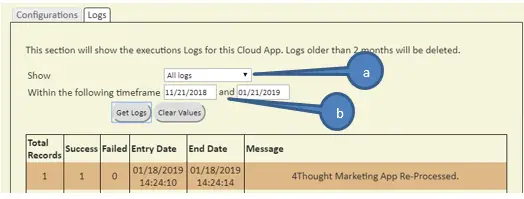
- Recommended: Create an element in the campaign in case an error happens, in this example it’s a Wait Step. Check the box to “Automatically route records with errors from cloud app”, select the step where you want the records to be routed.
Select the Step where you want the records to be routed.
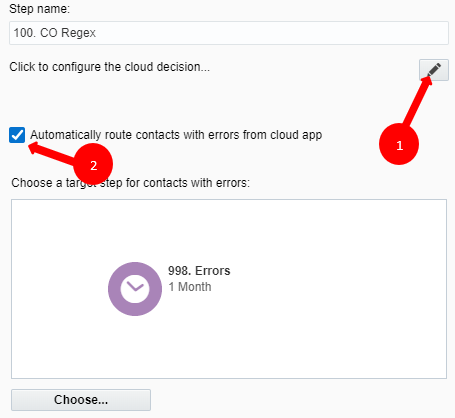
That’s all. Activate the campaign or program, put some records in it and see the CO Regex in action!
Note: Most 4Thought Marketing apps use the Eloqua BULK API to export/import records, therefore when an app is used in a campaign or program the user that activates the campaign should have the following permissions:
- API
- Consume API
- Contacts
- Upload Contacts/Prospects/Companies
- Manage Data Export
- Manage Contacts
License Information
You need a license to configure and execute this Cloud App. If you don’t have a license, an error message will appear on the configuration page.
If you don’t see CO Records being processed by the app, it may be because your license is missing or expired. To obtain a license, contact your account manager or contact us.
- Each Eloqua instance requires a separate cloud app license.
- Each cloud app license includes a reasonable usage limitation of 250k records processed daily and up to 5 app instantiations per Eloqua instance. Higher usage tiers are available at extra cost.
- For additional license details, please review the Cloud Services User License Agreement.







